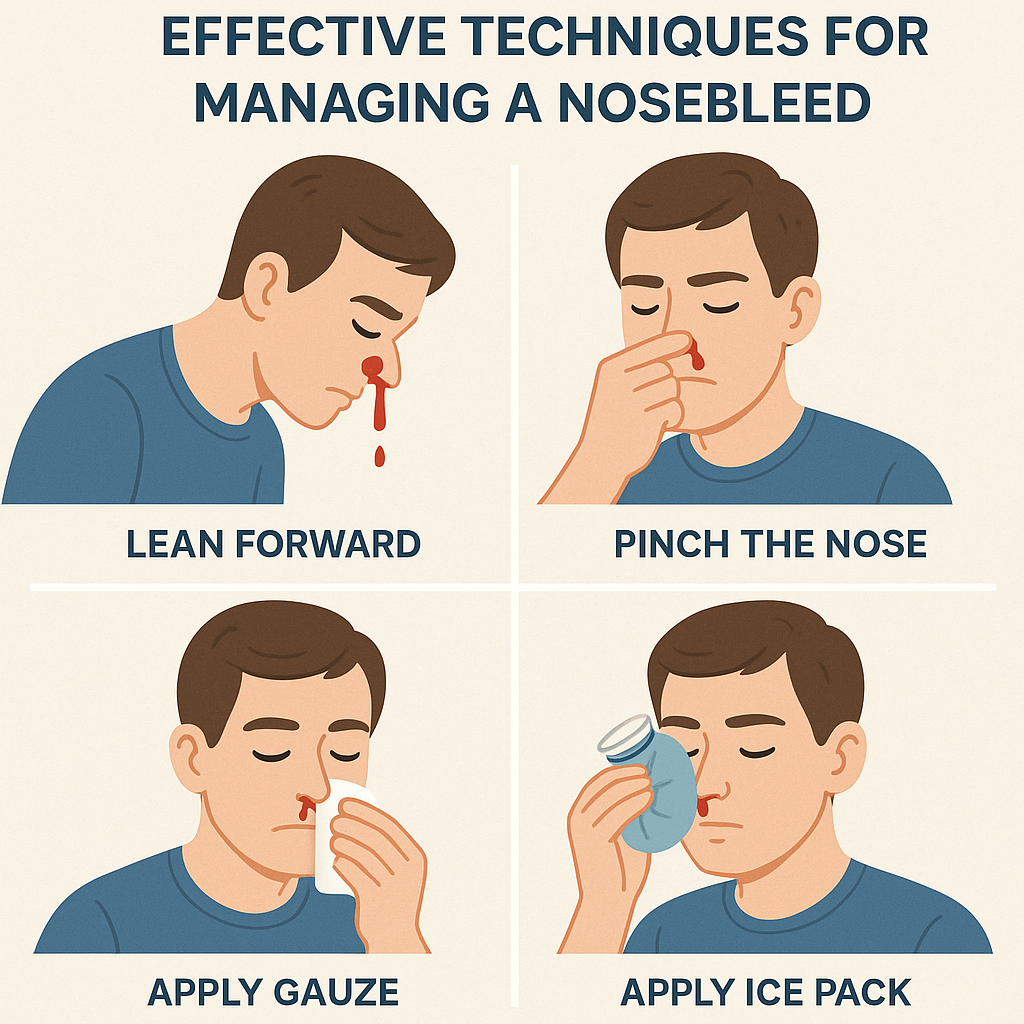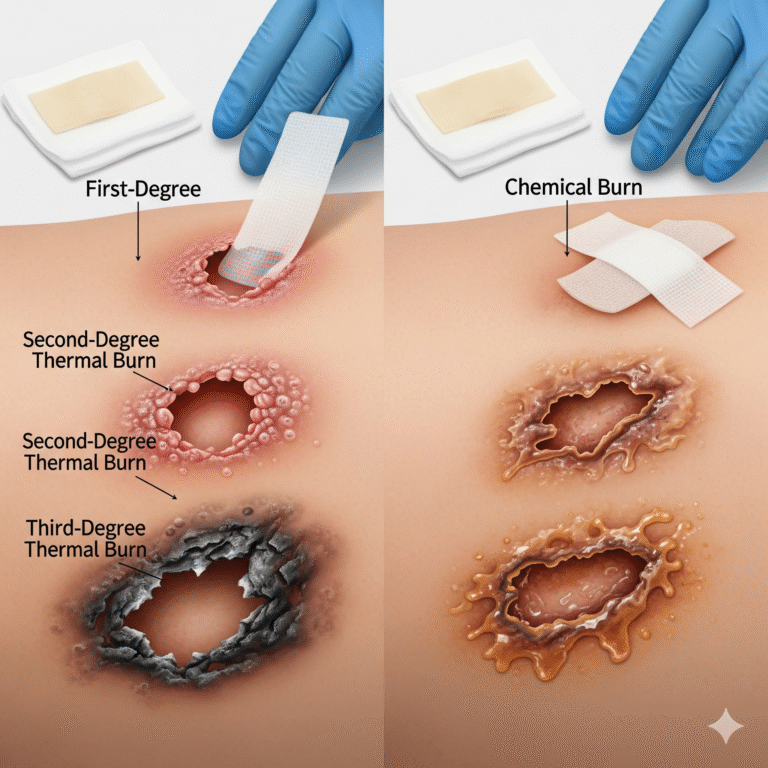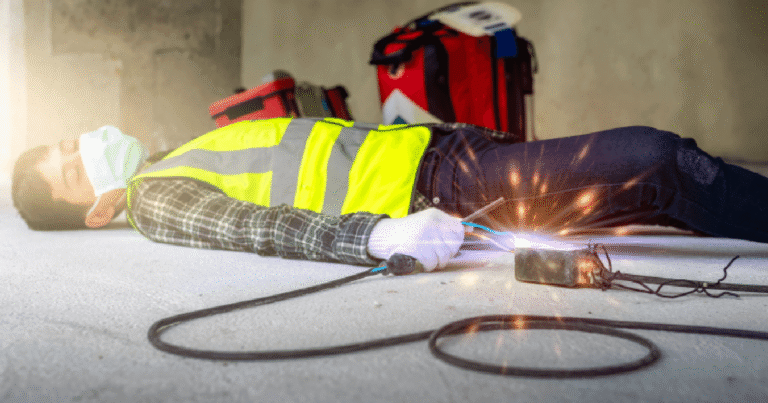Nosebleed First Aid:
Effective Techniques for Managing a Nosebleed
Learn efficient first aid methods to quickly stop a nosebleed. Understand the causes, prevention strategies, and when to seek medical advice.
Introduction
Nosebleeds, clinically known as epistaxis, are common occurrences that often necessitate first aid. Although they can be concerning, most nosebleeds are not serious and can be managed at home with the right techniques. It is important for everyone to be equipped with the knowledge to address a nosebleed promptly and safely.
Causes of Nosebleeds
Nosebleeds can result from various factors, such as:
- Dry air or the effects of central heating
- Nose picking or minor injuries
- Allergies or frequent sneezing
- High blood pressure
- Use of blood-thinning medications
- Trauma to the nose or surrounding facial area
First Aid Steps to Manage a Nosebleed
- Stay Calm and Sit Up
Avoid lying down. Keeping an upright position helps reduce blood pressure in the nasal veins, which can aid in decreasing the bleeding. - Lean Forward
Gently tilt your head forward to prevent blood from running down your throat, which could induce coughing, gagging, or vomiting. - Pinch the Soft Part of Your Nose
Firmly pinch the soft area of your nose, located just below the bony bridge, using your thumb and index finger. Maintain this pressure for 10 to 15 minutes without interruption. - Apply a Cold Compress
Use a cold pack or ice wrapped in cloth on the bridge of your nose or cheeks to constrict blood vessels and help reduce bleeding. - Breathe Through Your Mouth
While pinching your nose, breathe continuously through your mouth until the bleeding stops.
When to Seek Medical Attention
You should seek medical care if:
- The bleeding persists for over 20 minutes.
- The nosebleed occurs after a significant injury.
- You frequently experience severe nosebleeds.
- You are on blood-thinning medications or have a bleeding disorder.
- You feel lightheaded, weak, or faint.
Preventing Nosebleeds
- Use a humidifier to keep indoor air moist.
- Avoid picking or rubbing your nose.
- Apply saline sprays to combat dryness.
- Keep children’s fingernails short.
- Wear appropriate protective gear for the nose during sports.
Conclusion
While generally not dangerous, nosebleeds can be unsettling. By implementing these simple first aid techniques, you can effectively manage most nosebleeds quickly and safely. Always seek medical attention if the bleeding is heavy or continues for an extended period. Being informed is crucial for handling common first aid situations.





